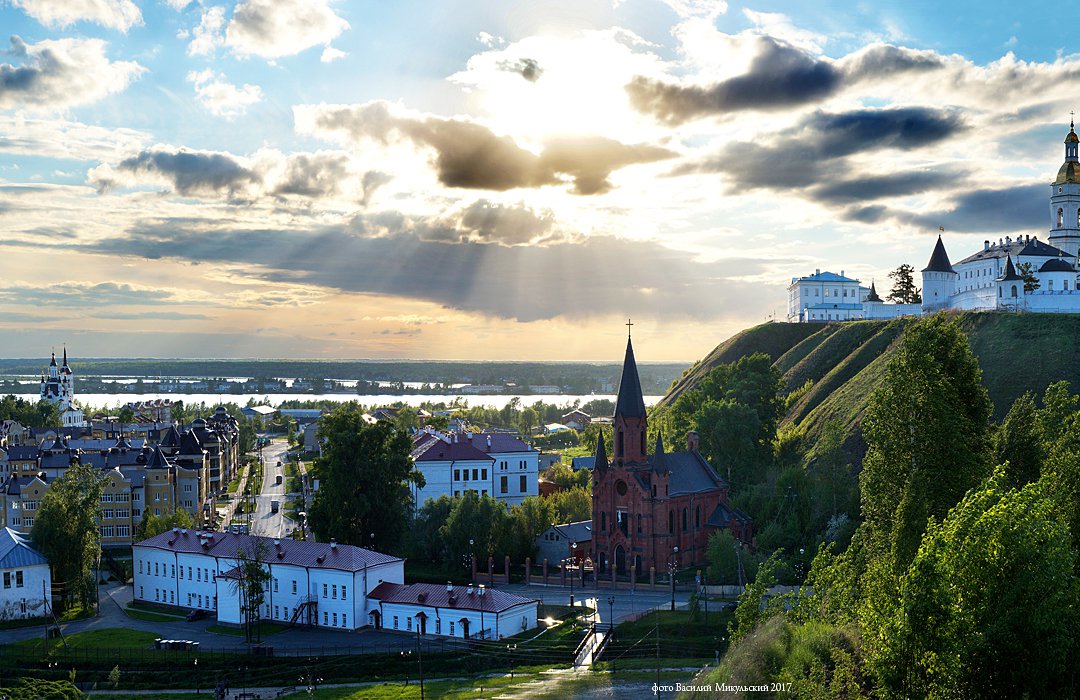 A historic capital of Siberia
A historic capital of SiberiaArrive Tobolsk, the first Russian capital of Siberia · Amazing wooden architecture · The first town of Siberia, founded in 1587, it was a center of Siberia’s development · Many famous Decembrists and other political exiles since Tsar Boris Godunov times till Tsar Nikolay II exile before execution in Ekaterinburg · The only stone Kremlin in Siberia. For 2 centuries, it was the main center of Siberian (military, political, trade, religious) · Lots of great monuments and old buildings, gorgeous Orthodox architecture · Great Silk Way, northern route · One of spiritual centers of Russia · 17 km – capital of Siberian “khanate”. The field of the main battle of Ermak with Tatars · Famous people: Mendeleev, painter Perov, architect of Ostankino TV tower and Volgograd monument “The motherland calls” and more·
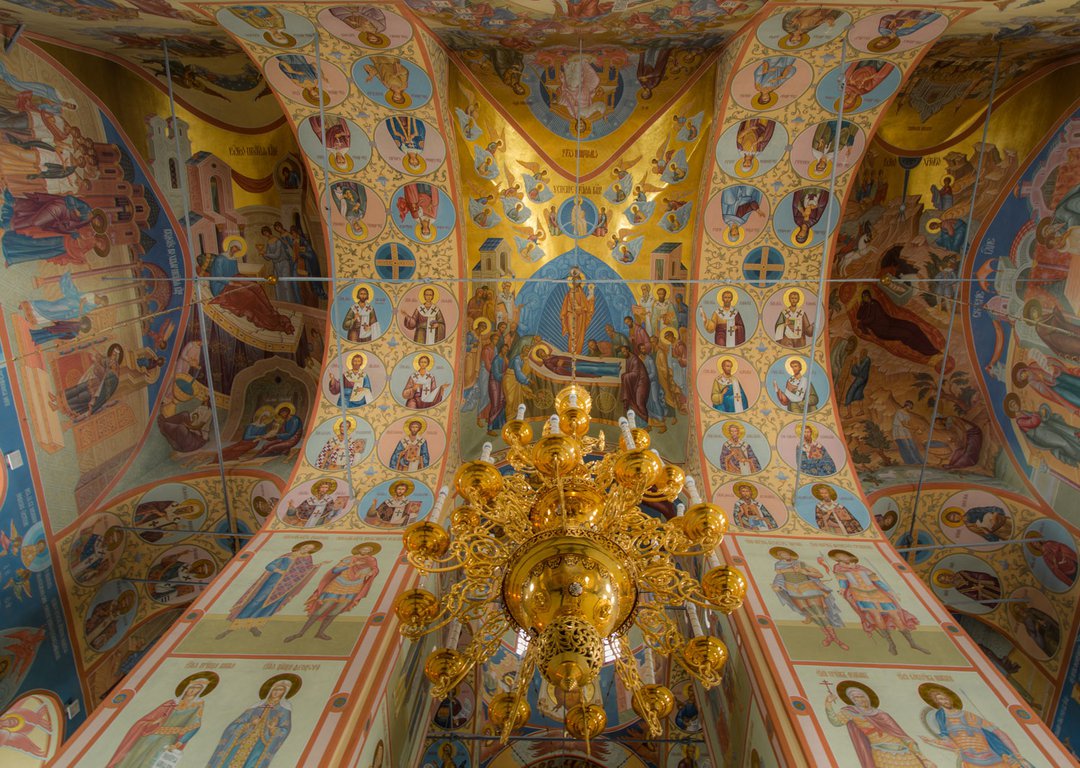 St. Sophia's Cathedral
St. Sophia's CathedralThe main attraction of Tobolsk is the only stone Kremlin in Siberia. It was created in the XVII-XVIII centuries according to the project of the local architect Semyon Remezov. Fortress walls were built on an elevation near Irtysh. The riverbed had to be taken aside for two versts (a little more than two kilometers) so that it would not erode the mountain - thousands of captured Swedes who got here during the Northern War were involved in this work. You will definitely recognize Russian Orthodox art in the main cathedral, St. Sofia's, it resembles many older prototypes in the European Russia. And yet, you are now in Siberia, thousand kilometers away from ancient Vladimir and Suzdal. Tobolsk's St. Sofia is number 4 St. Sofia after Kiyv, Veliky Novrorod and Polotsk. Built in 1683-1695 годах, it is the older stone Russian building in Siberia. The Kremlin's buildings include the Sofia-Assumption Cathedral, the Renterei building (treasury), the Governor's Palace and the Prison Castle, built later. Renterey connects the upper and lower city - this is a gate through which two hundred steps pass. "There is such a tradition among lovers - to come here together and count steps. If the numbers coincide at the end, then the pair is compatible, "laughs guide Lyubov Vitkovskaya.
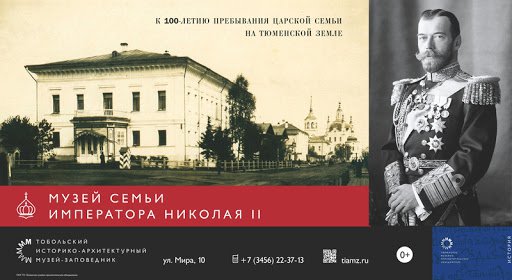 Nikolai II exile museum
Nikolai II exile museumAnother highlight of Tobolsk is a former governor's house where the family of Tsar Nikolai II lived in Siberian exile for eight months. Romanov's life in the city can be traced to photographs and preserved personal things. Museum workers restored the old staircase with a sad history: Tsarevich Alexei fell from it, after which he could hardly walk until the end of his life. River Irtysh in Tobolsk is twice narrow as Kama in Perm and three times as the Volga in Samara, but makes a stronger impression. Those rivers are cultivated, long turned into tourist sites. Irtysh is more primitive and harsh: slow steel-colored water, freezing you any time of the year, low sky with dark clouds, and wild expansest till the horizon. Irtysh met the Russians hostile - Yermak, the leading man behind Russia's invadion to Siberia died here at Irtysh, and the Tobolks, it seems, could not forgive the river for such meanness. The Kremlin hangs over the river as a symbol of constant vigilance and readiness to fight back.
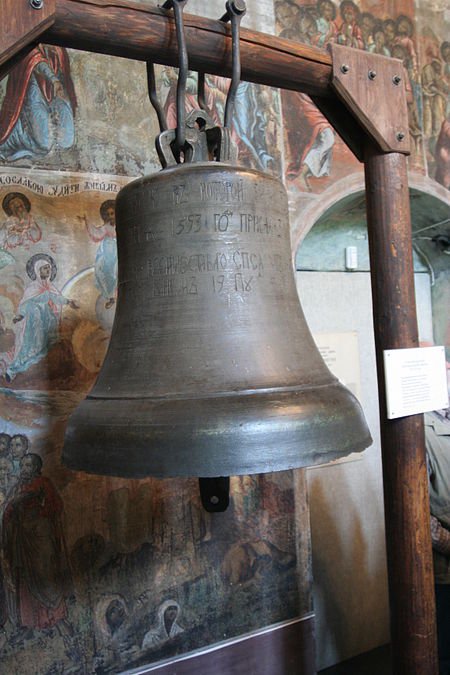 The prisoner -bell
The prisoner -bellWant more tales? Here we go. When an uprising was crushed in ancient Uglich (it began when then the news about murdering Tsarevich Dmitry, the last of the Rurikovich, broke), Tsar Boris Godunov punished both people and ...the bell - its ear was chopped off, tongue was ripped out, beaten with weaves and sent into exile to Tobolsk. The bell was hung on a belfry, and it is know in the history as "the first unconscious exile from Uglich. making it the first prisoner ever sent to Siberia. At the end of the 19th century, the bell was returned to Uglich, where it is stored in the museum, in an honorable place - in total, it spent 299 years in exile, setting a world record for serving its sentence!
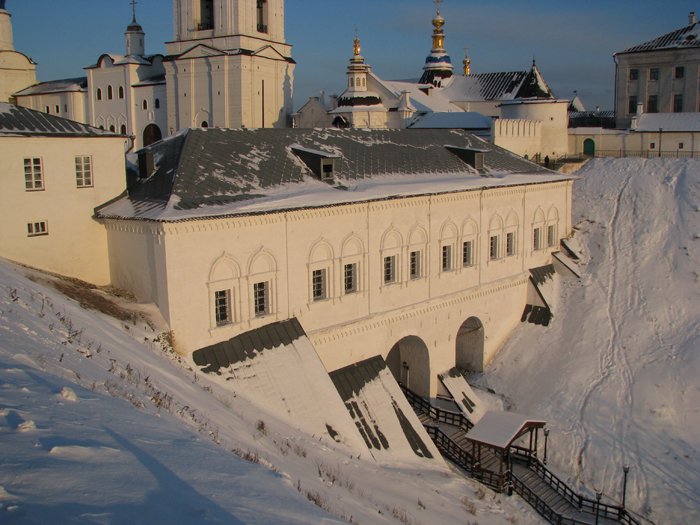 Ovrag
OvragOne of the most unique ensemble included in the general ensemble of the Kremlin - the Direct call, the rise to the Kremlin, leading to the mountain along the bottom of the ravine (ovrag)
 Unique local art
Unique local artVisit a museum of Bonfire art, of which Tobolsk is famous for. Here, learn about one of the oldest crafts, see products from the mammoth tusk and not only within the walls of the unique factory, supplement the impression by hearing about life and the mythology of the indigenous peoples of the north from that Minsalim himself, which preserves and honors centuries-old craft in his workshop.